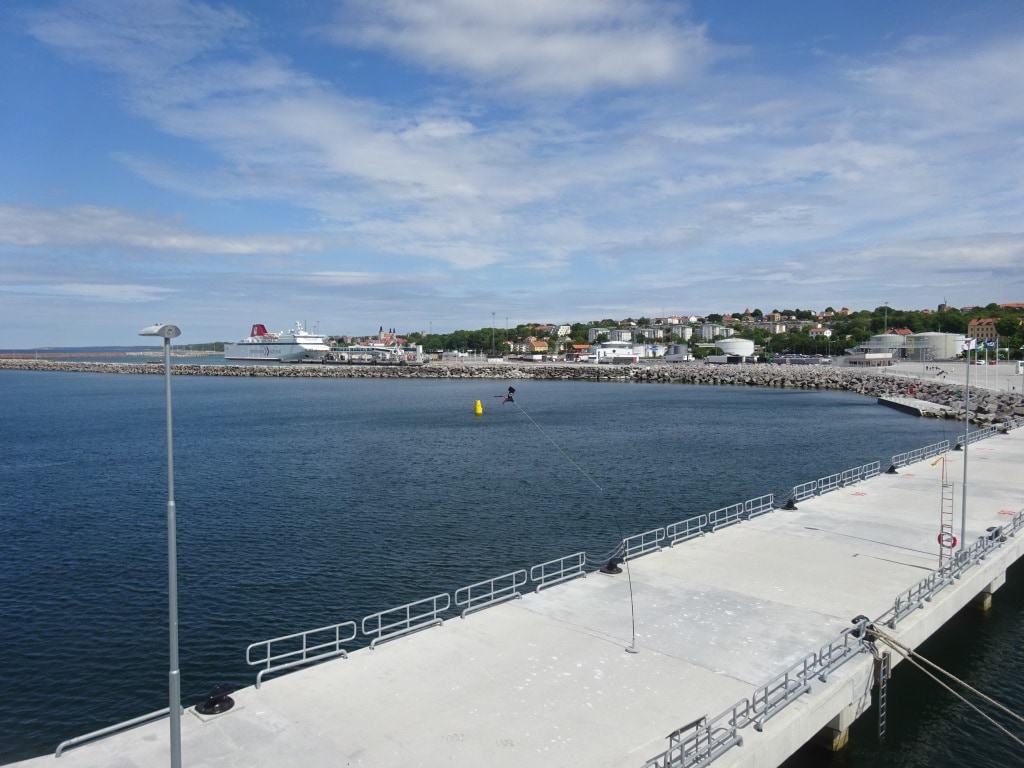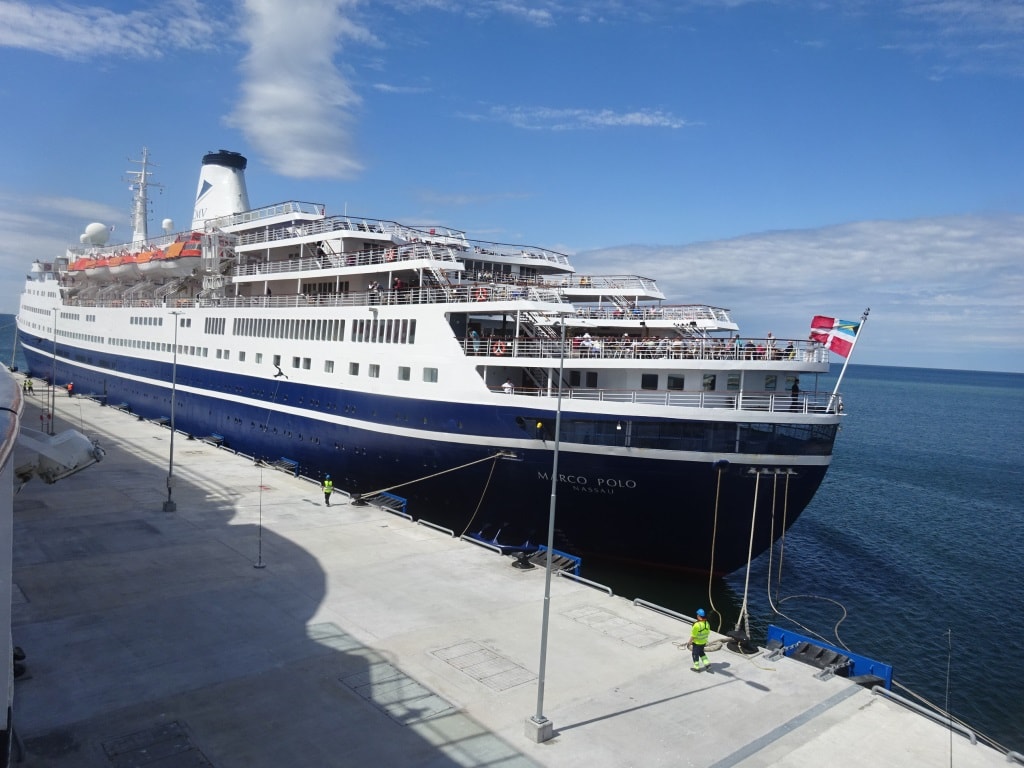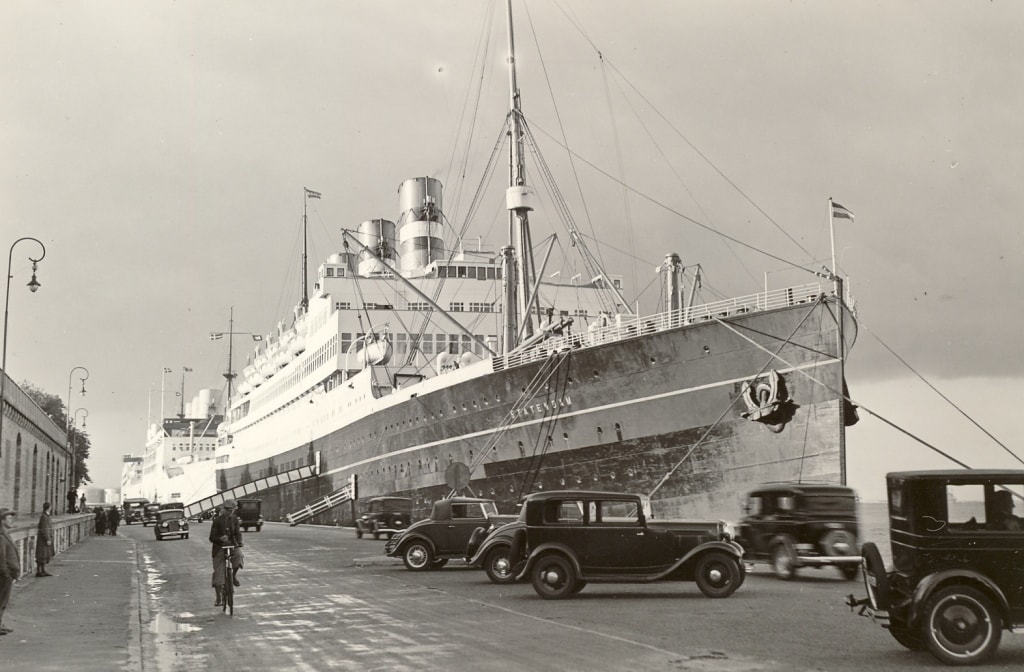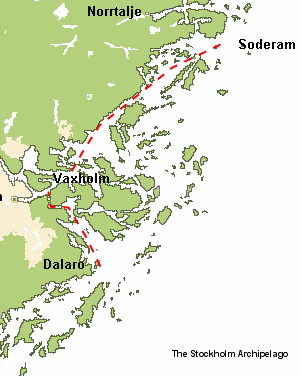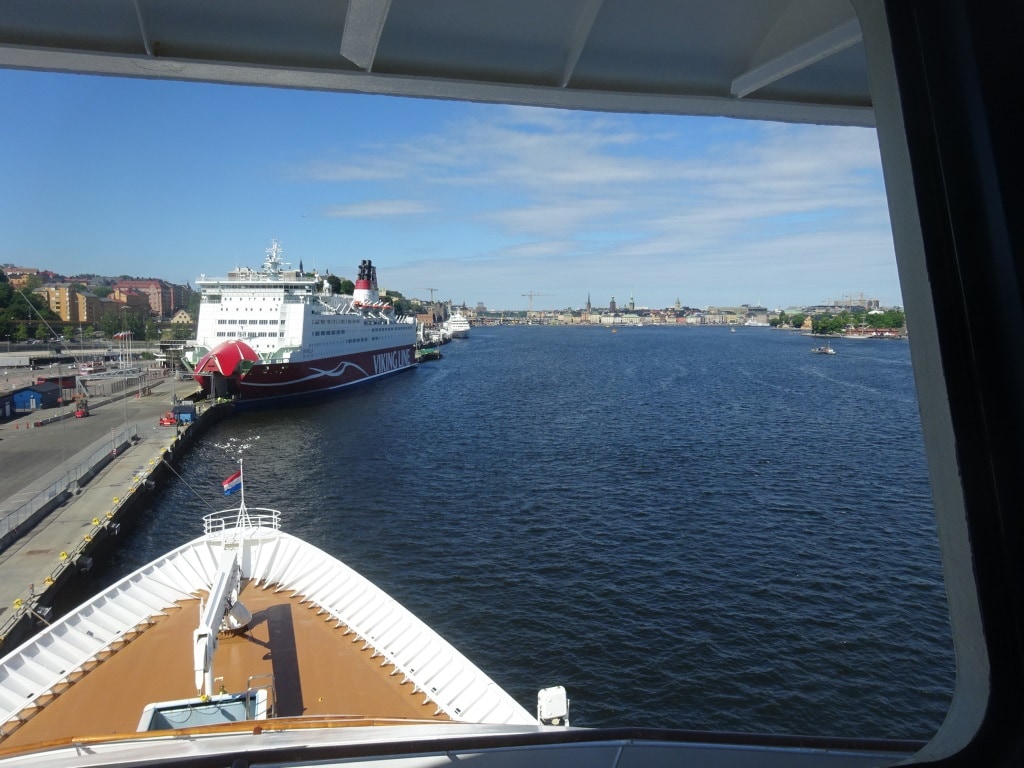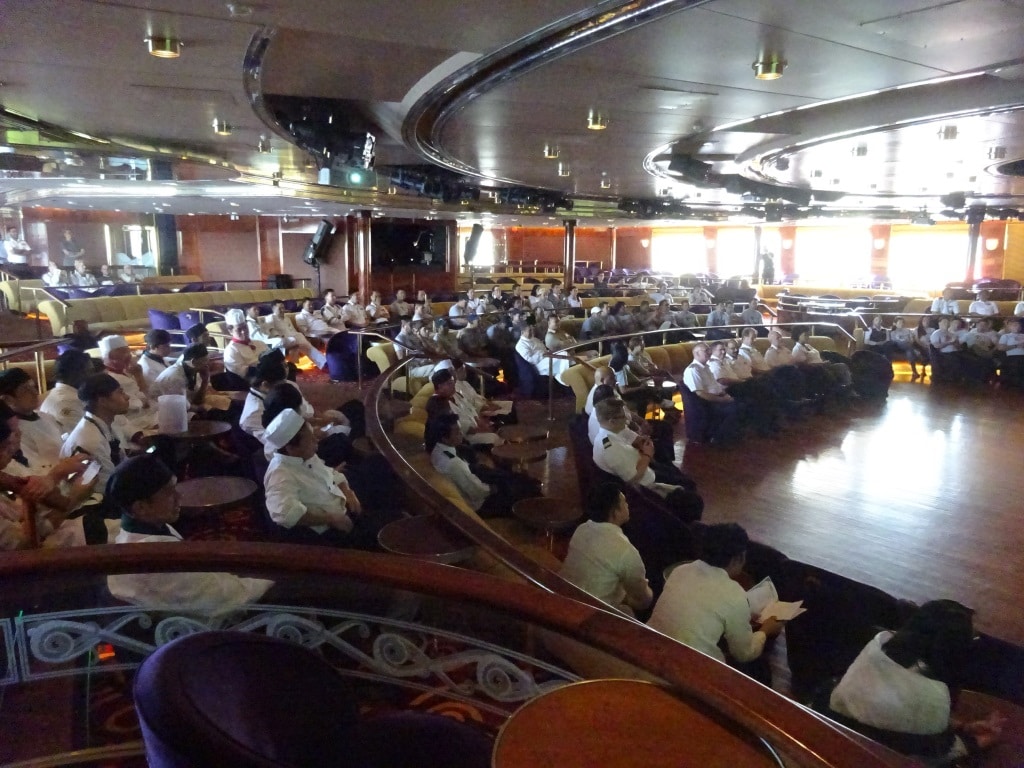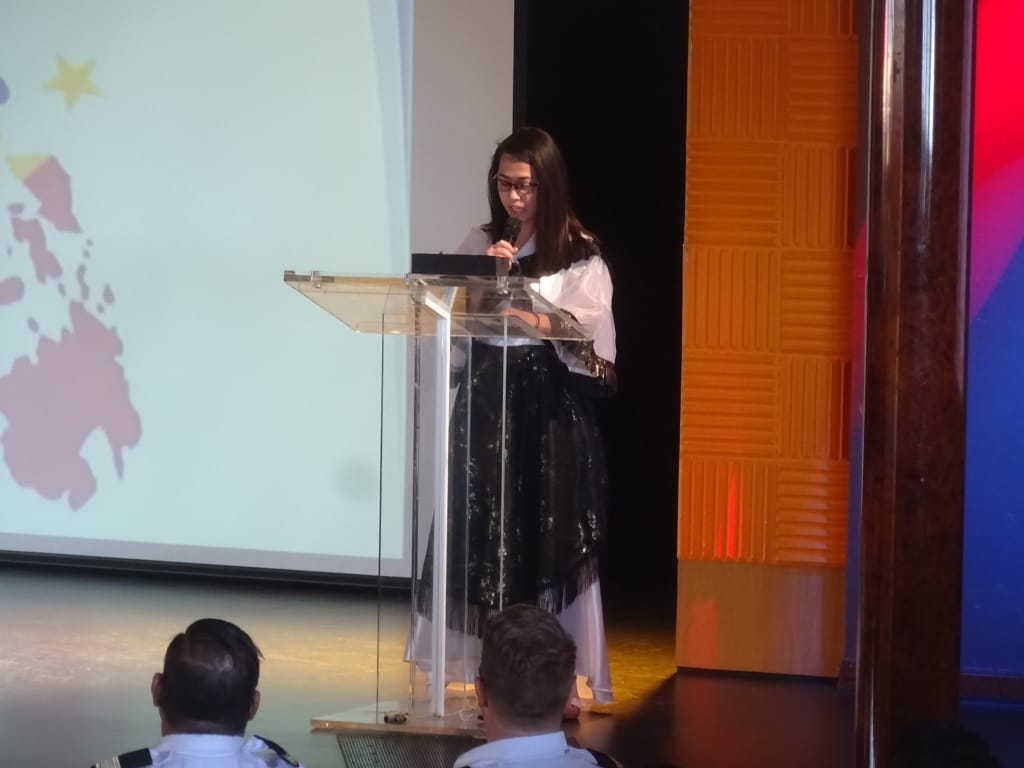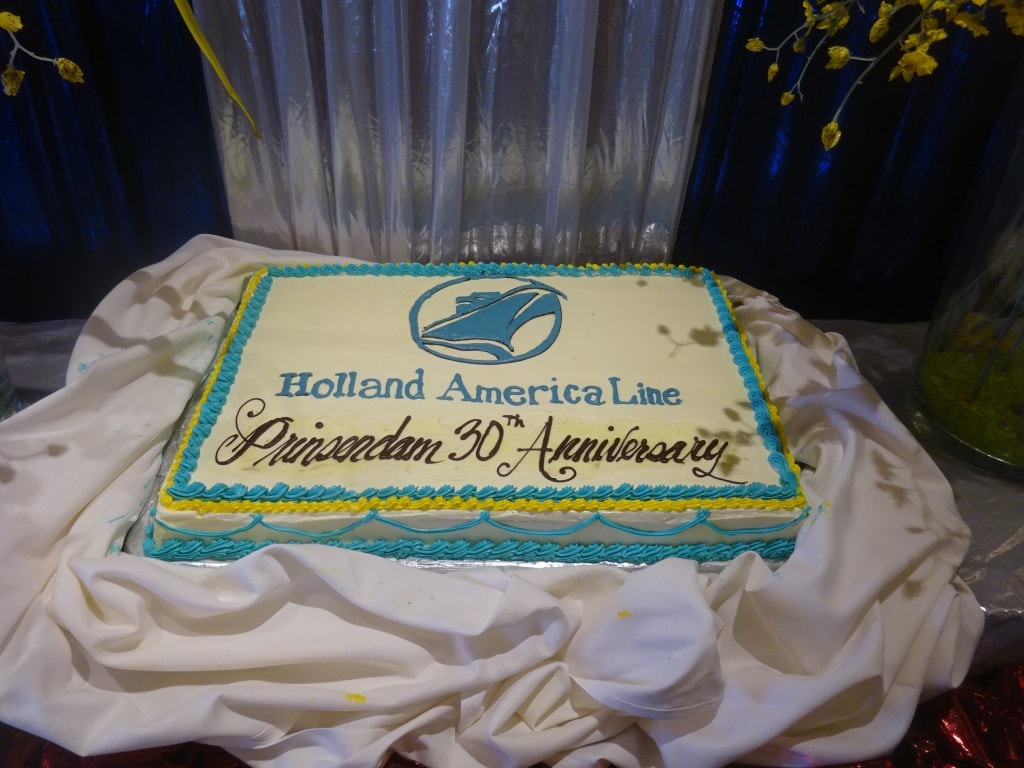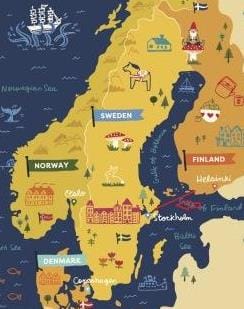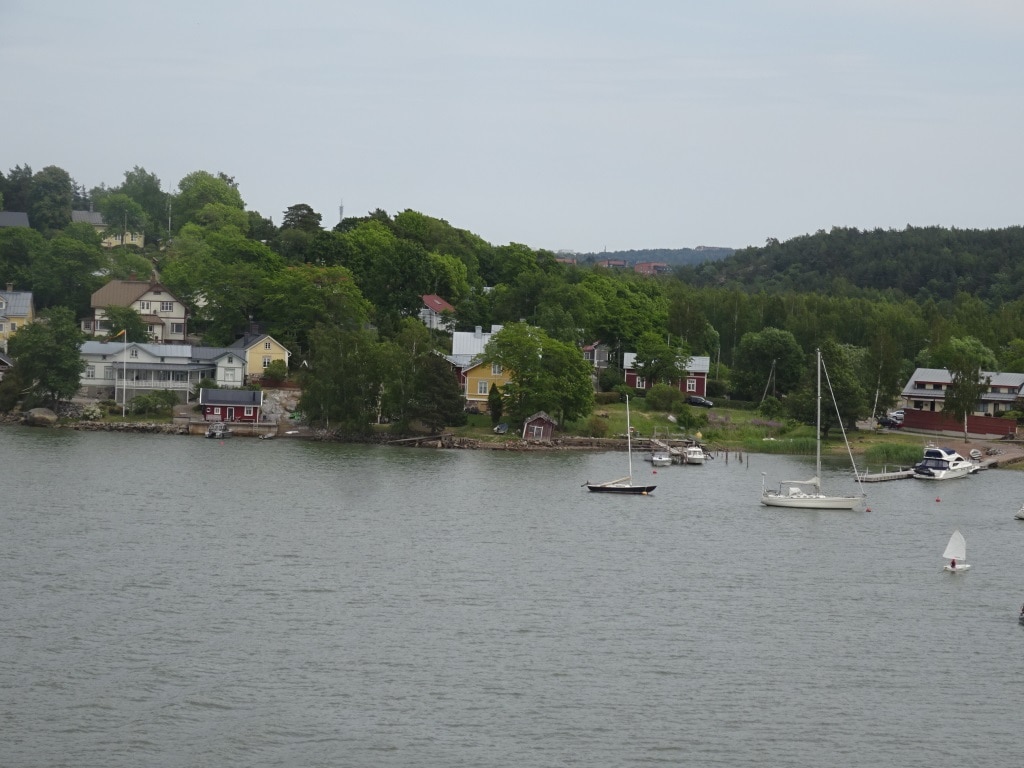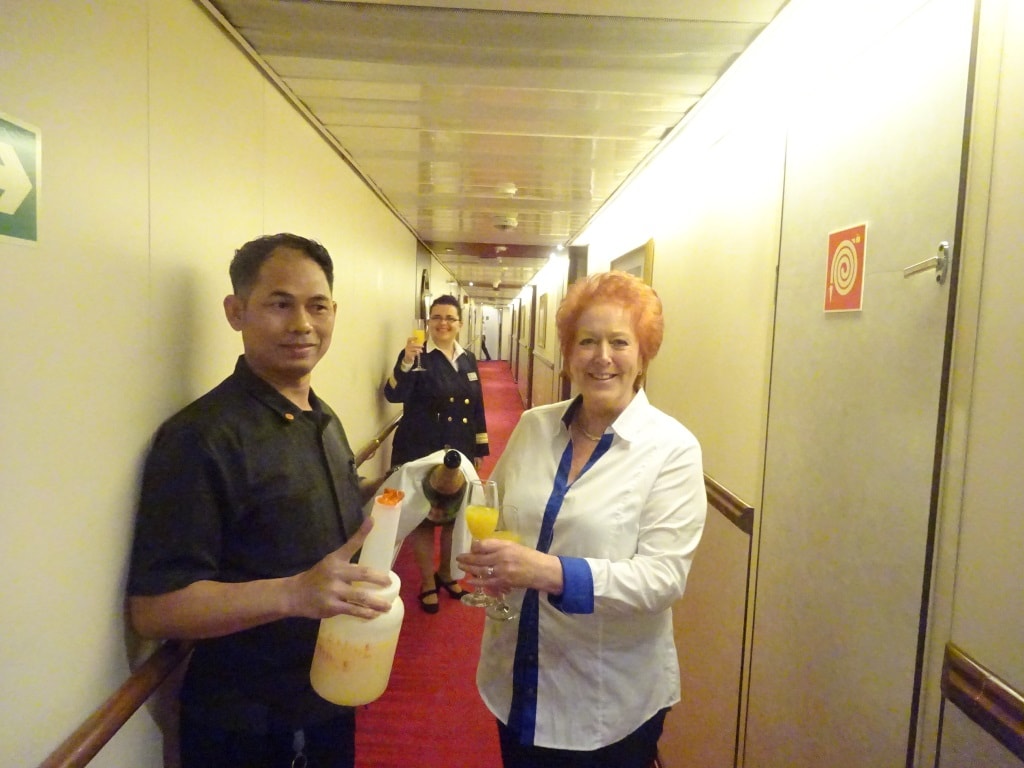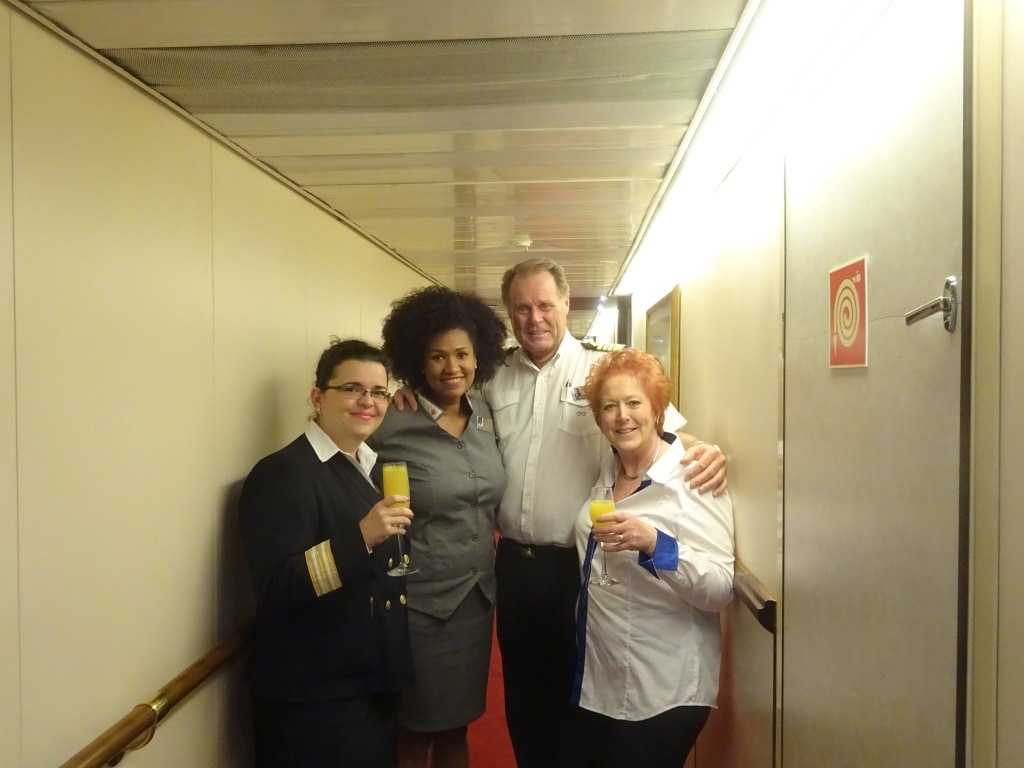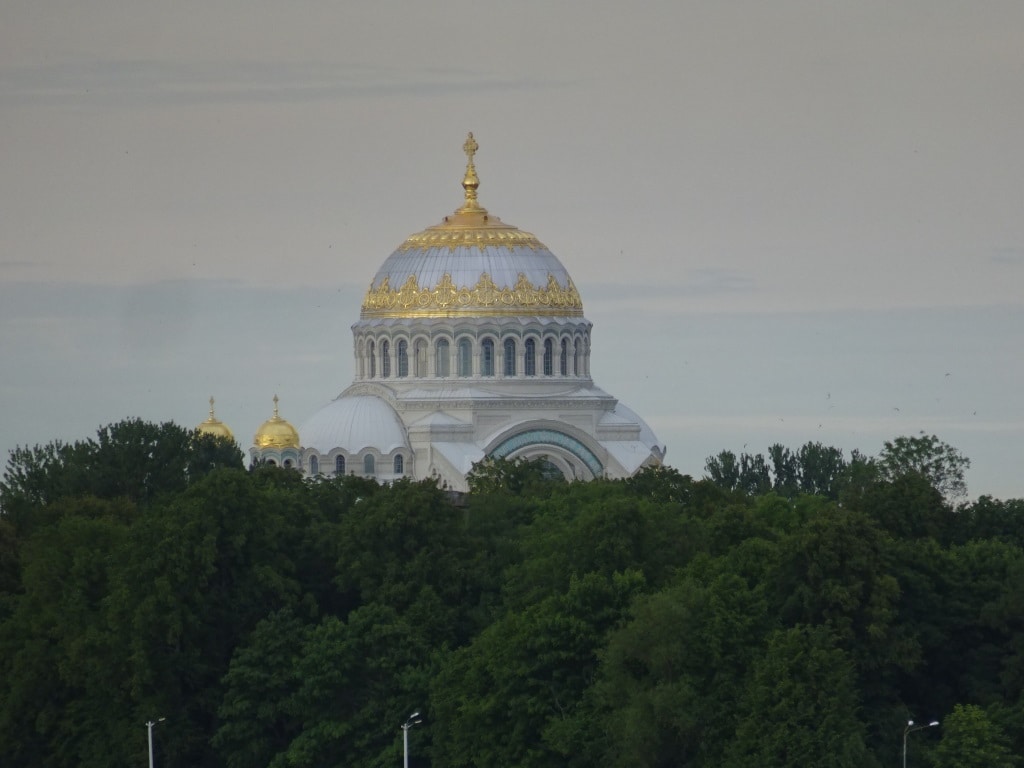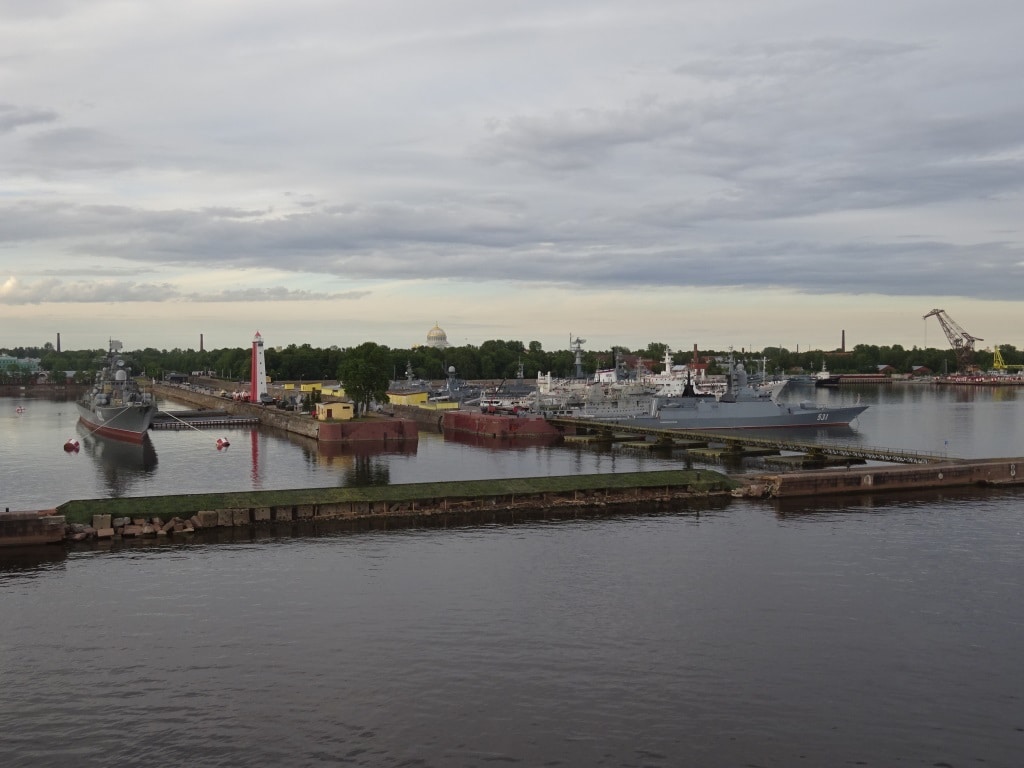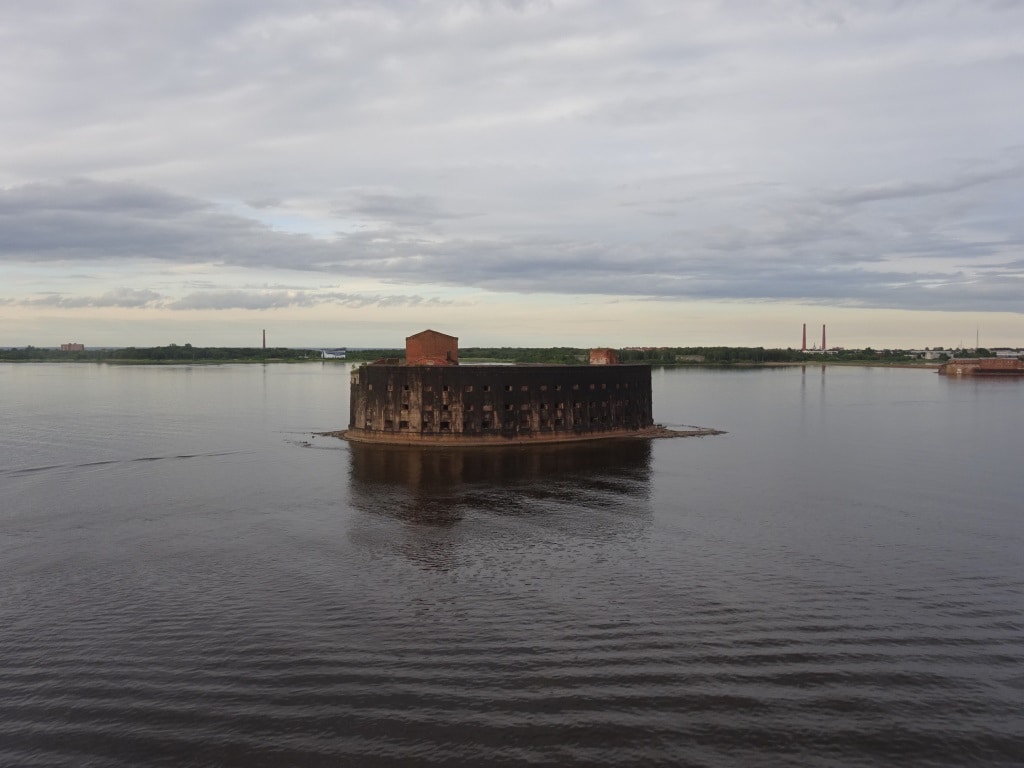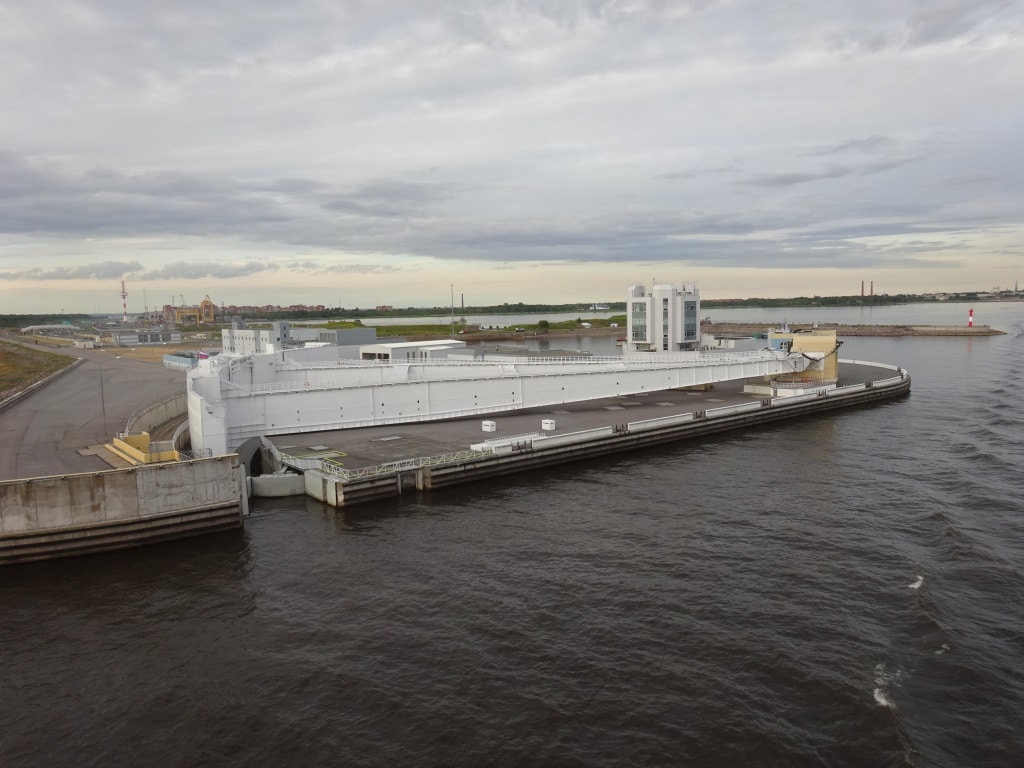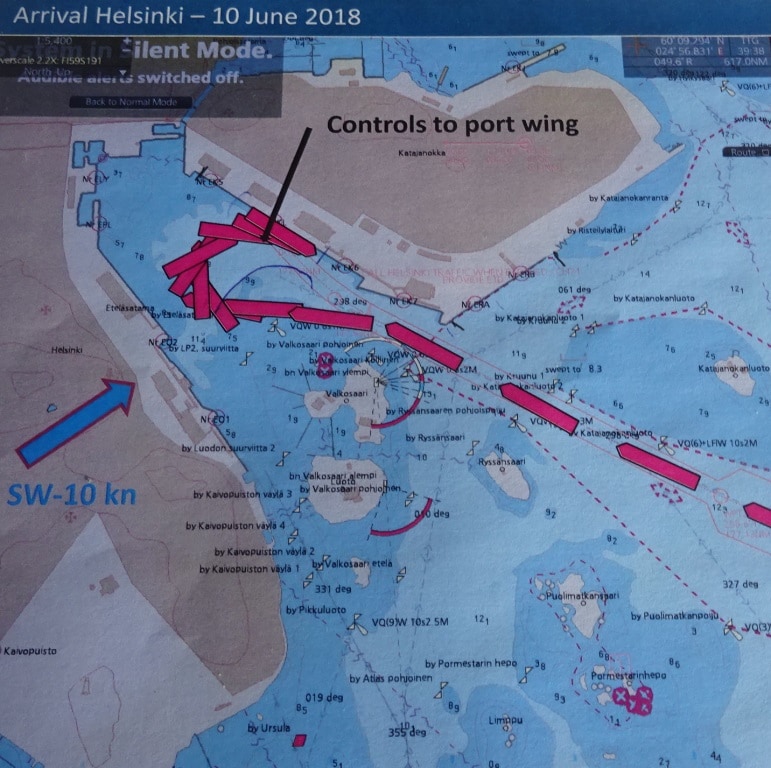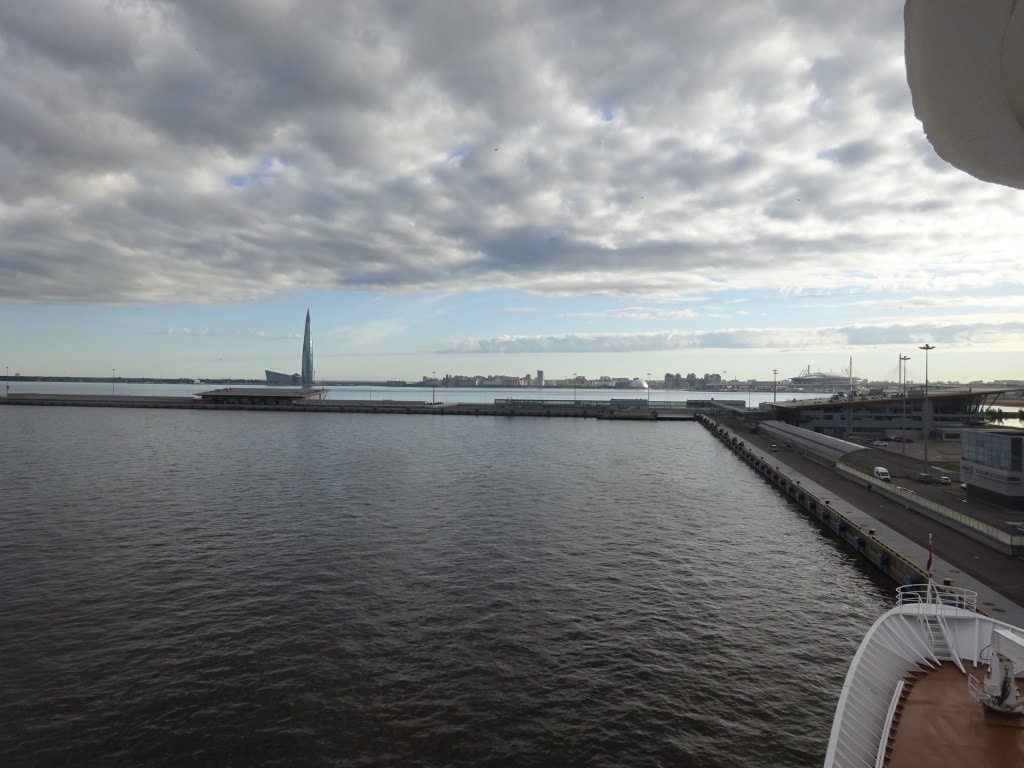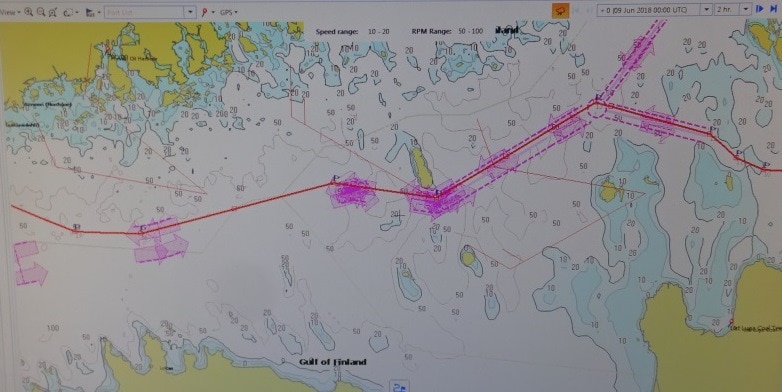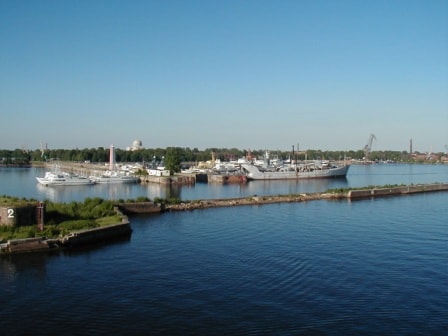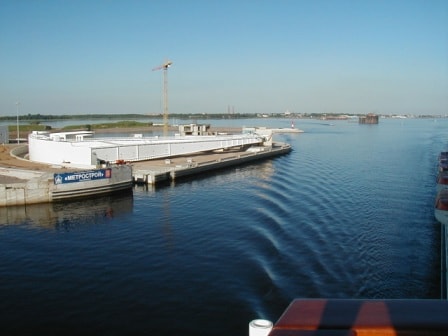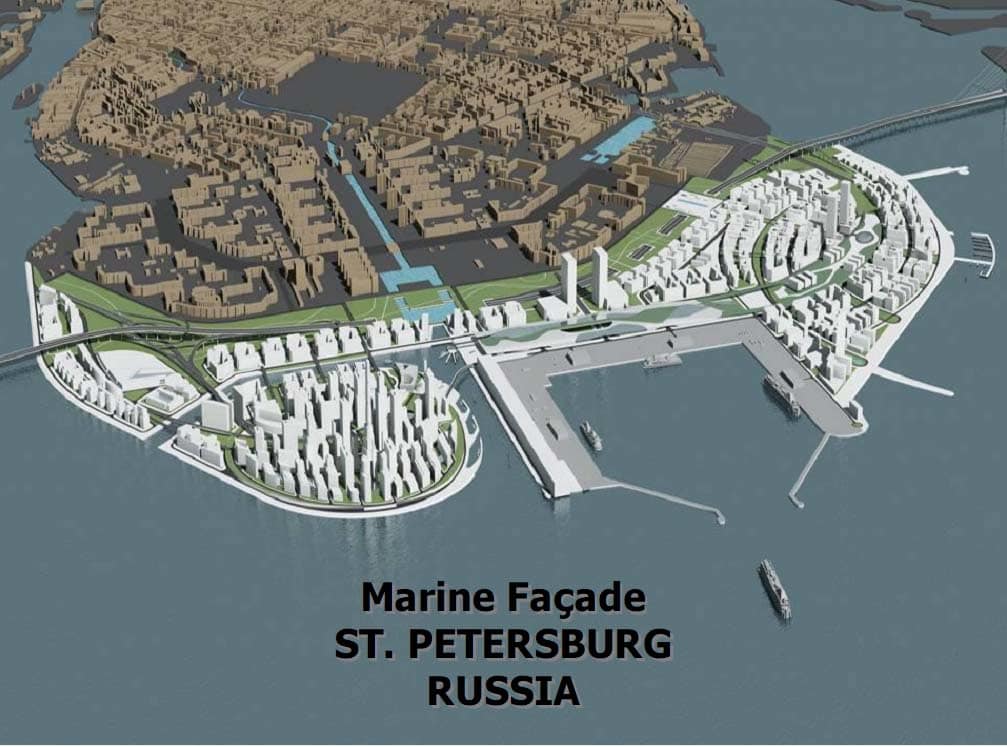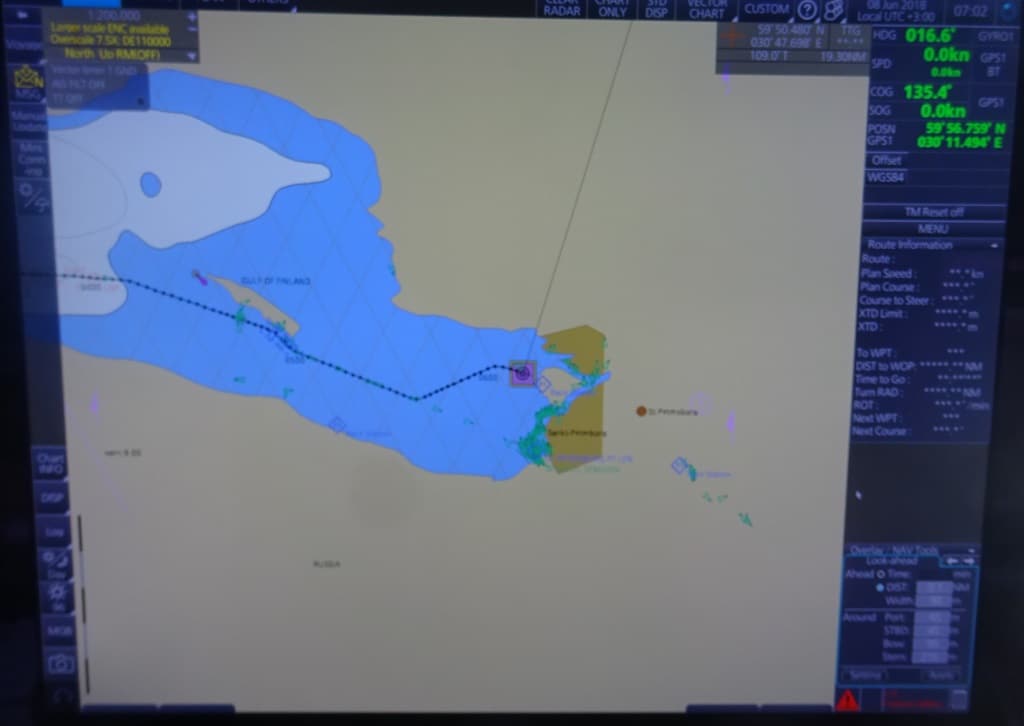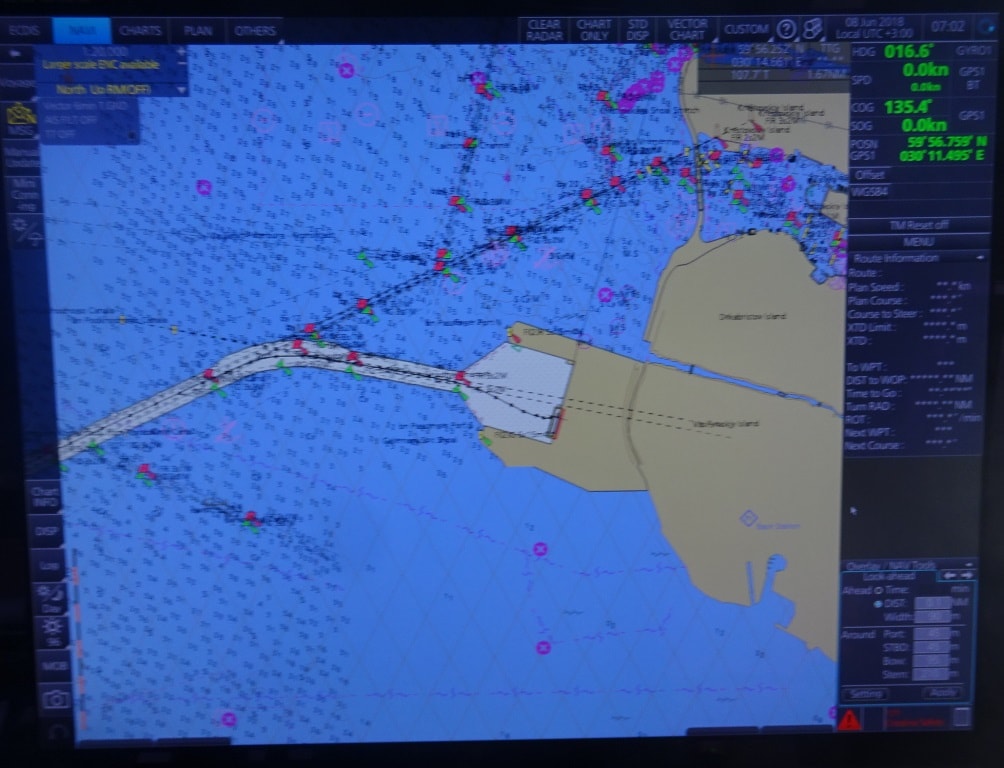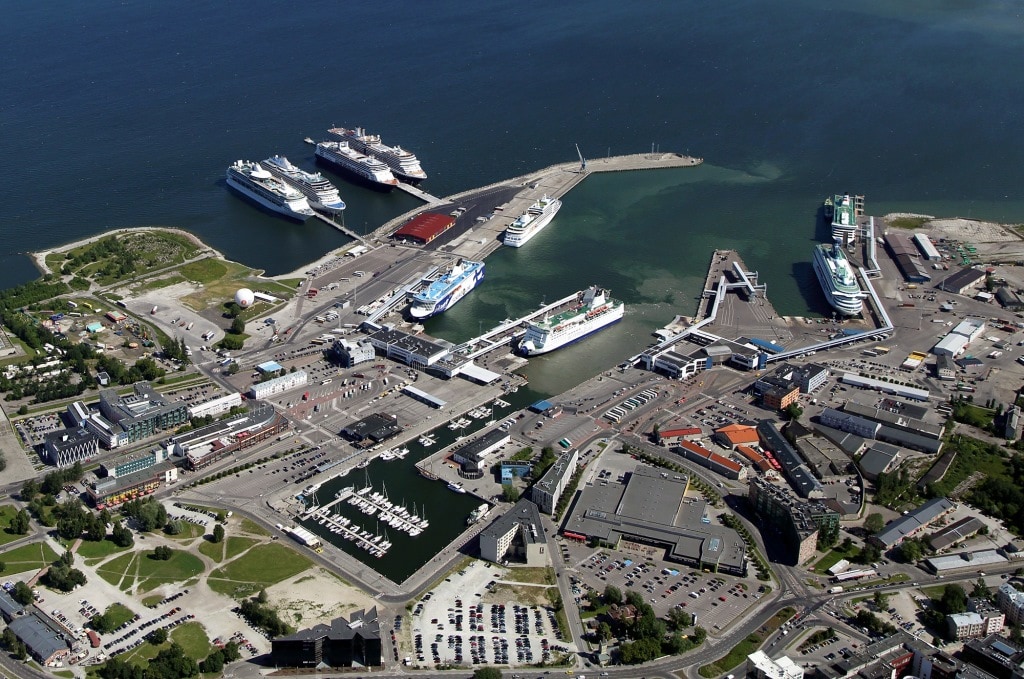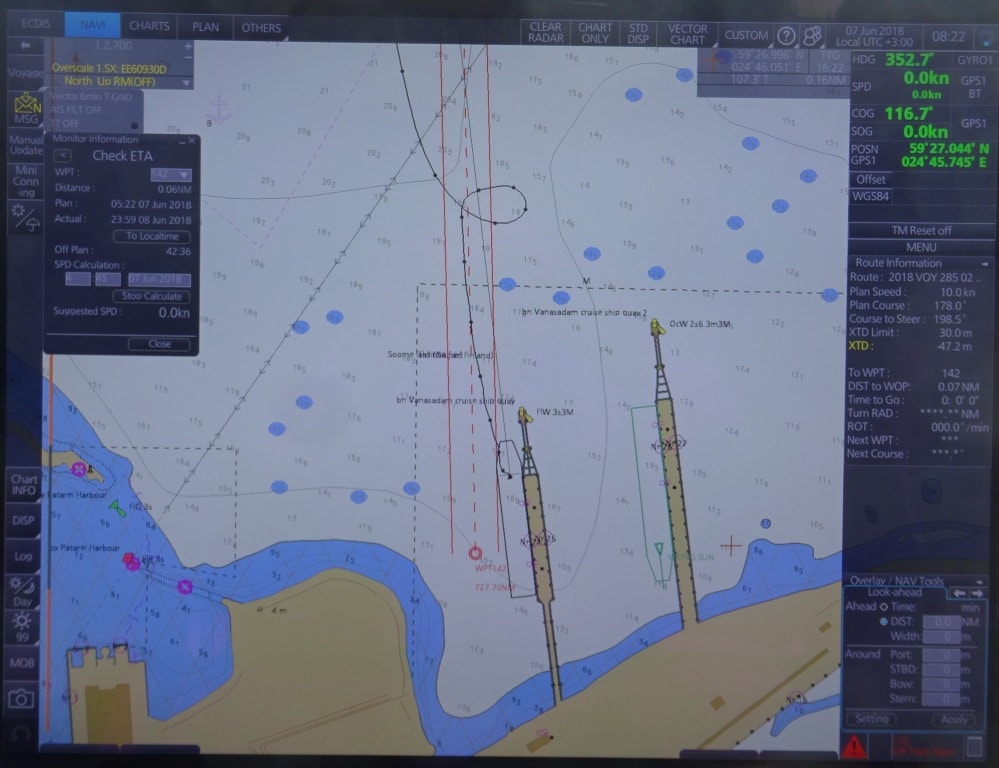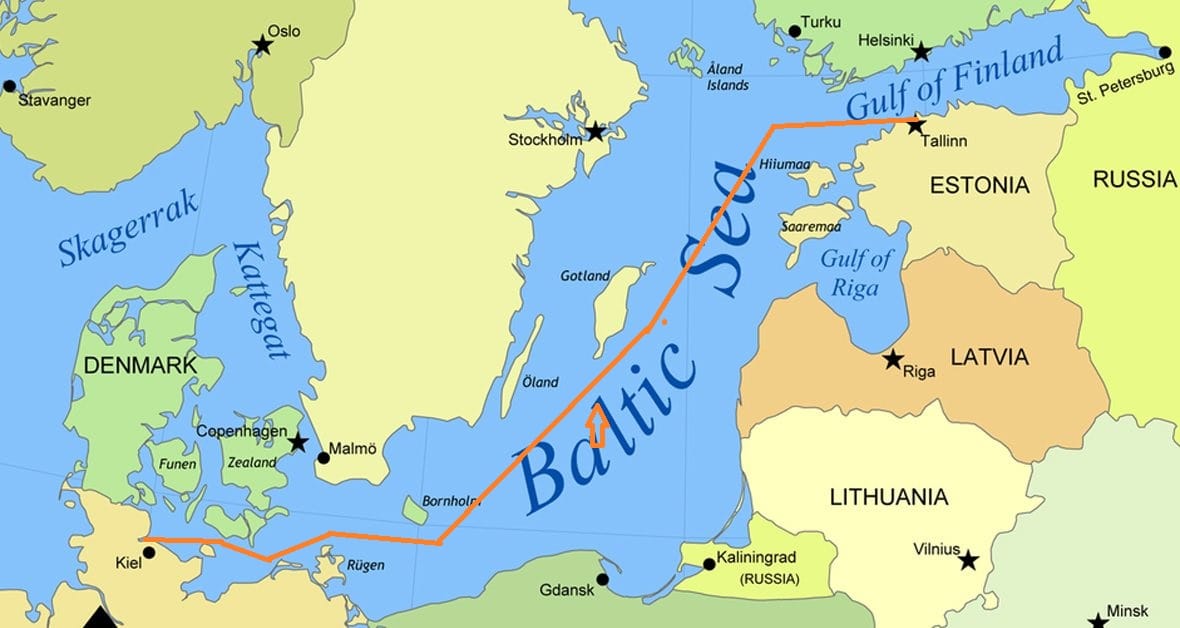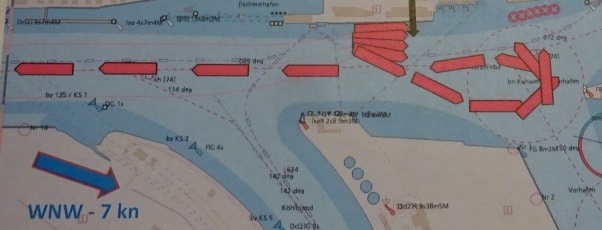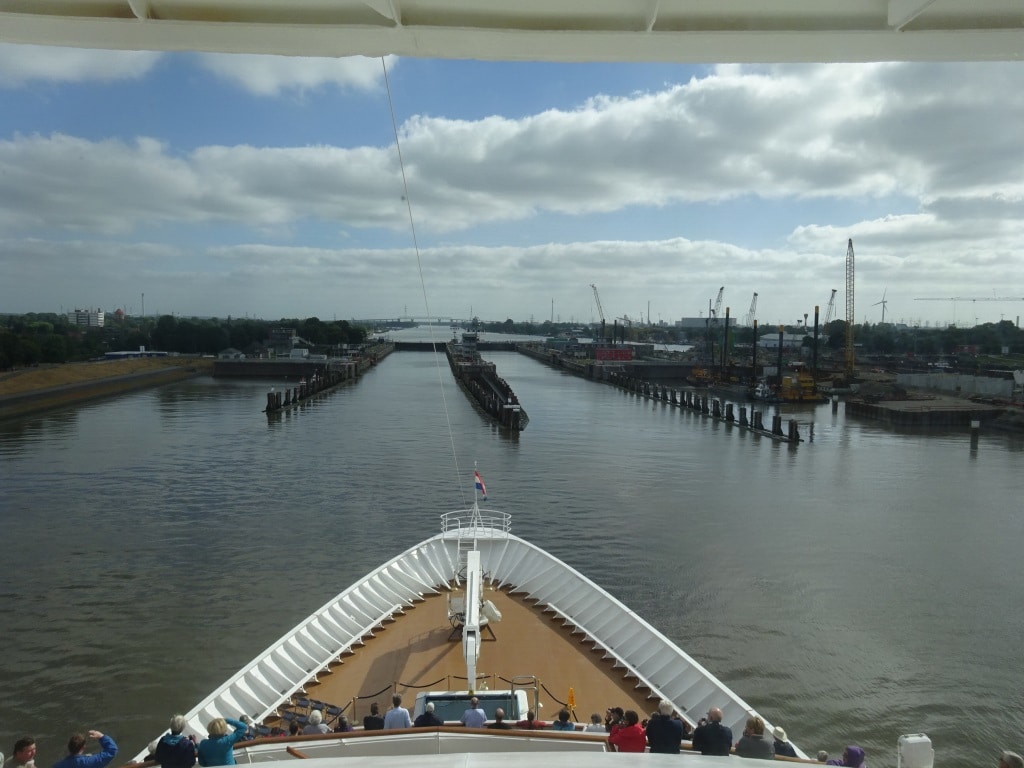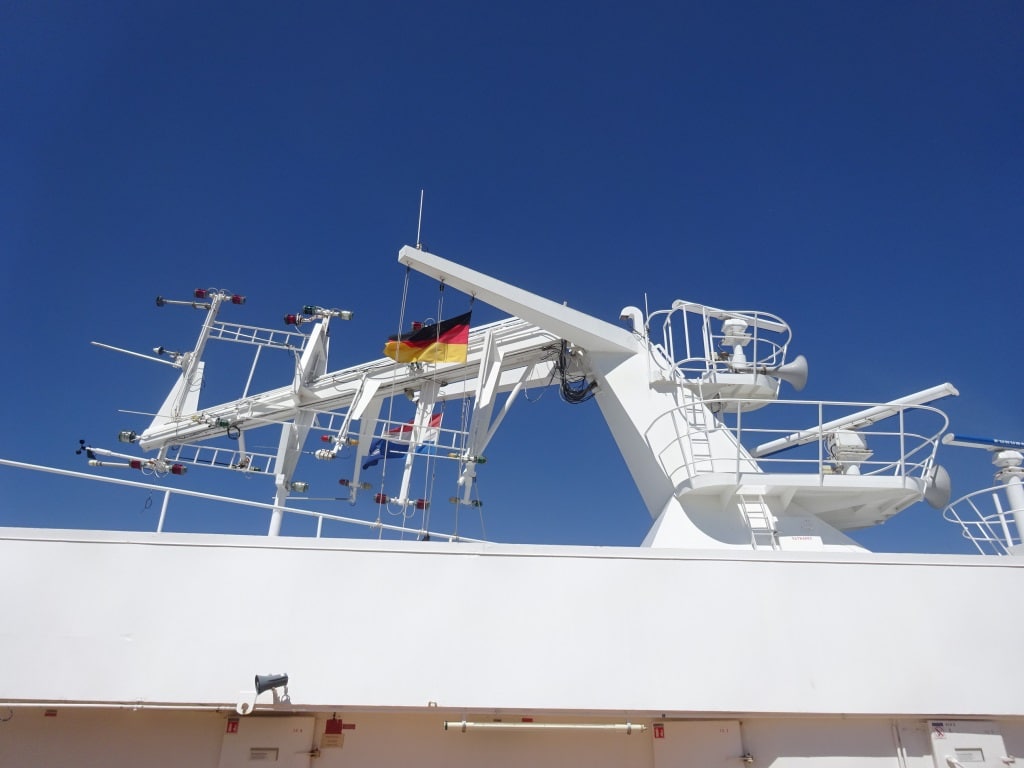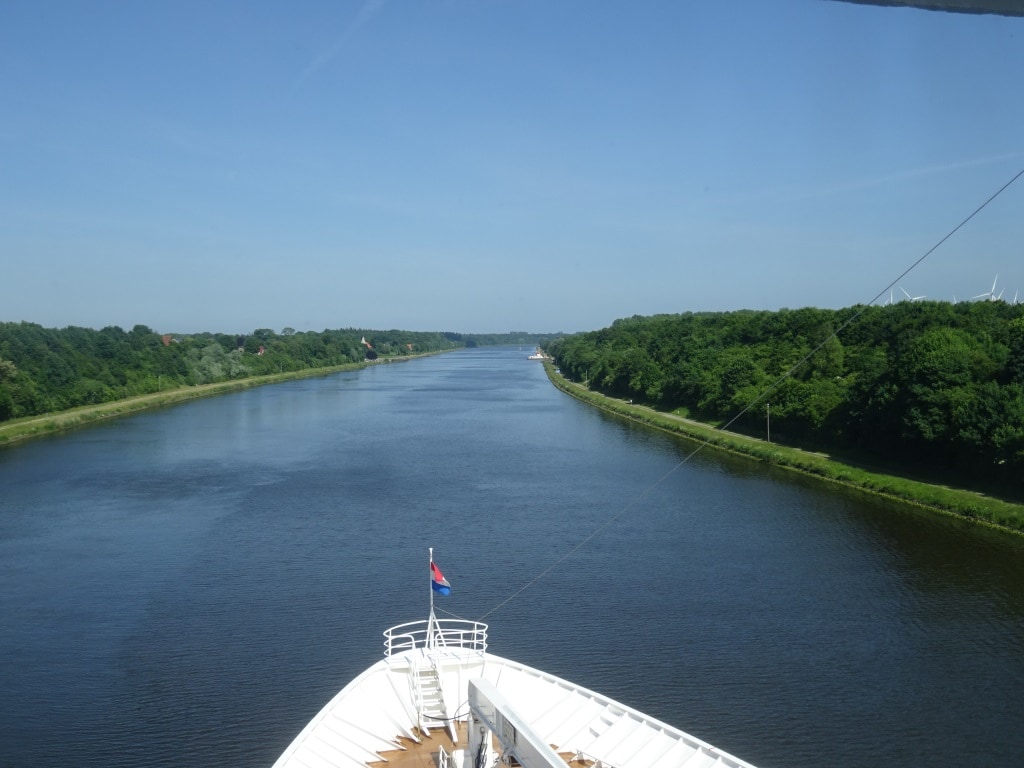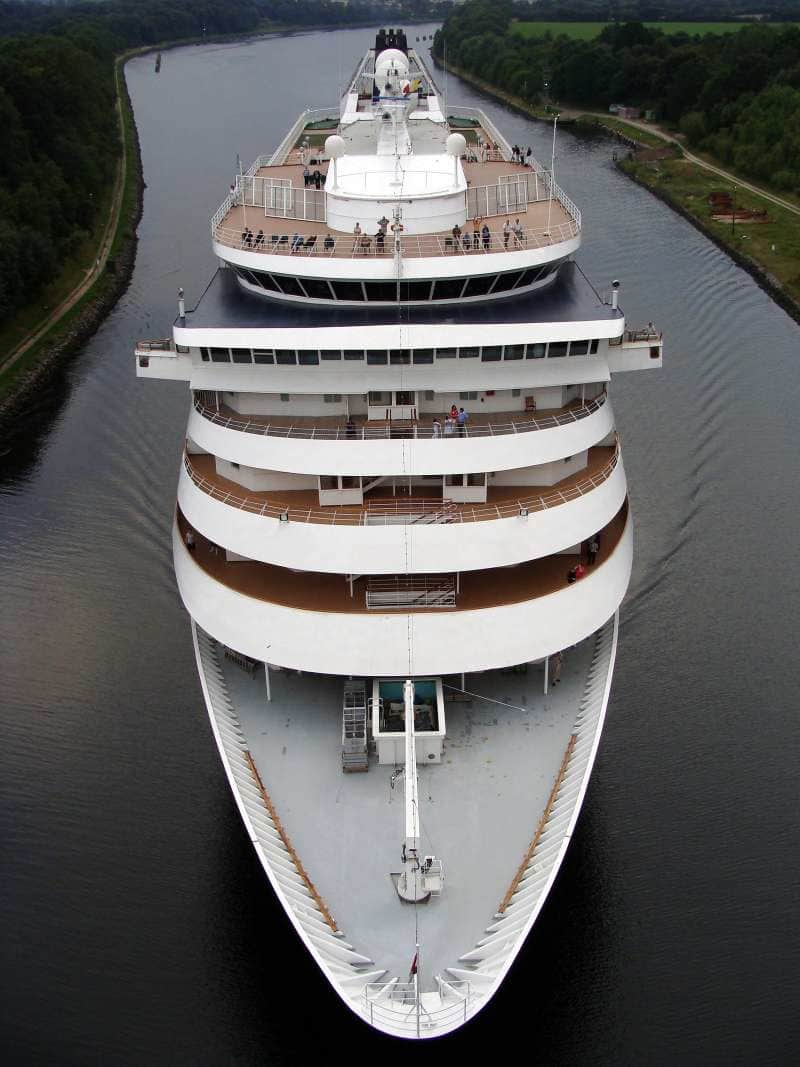For the light sleepers on board, or persons like me who are trained to catch changes in the ships rhythm, (as that normally means trouble) they would have woken up this morning at 05.00 hrs. when the ms Prinsendam started to vibrate a little bit. An expected vibration as the ship entered Drogden Channel.
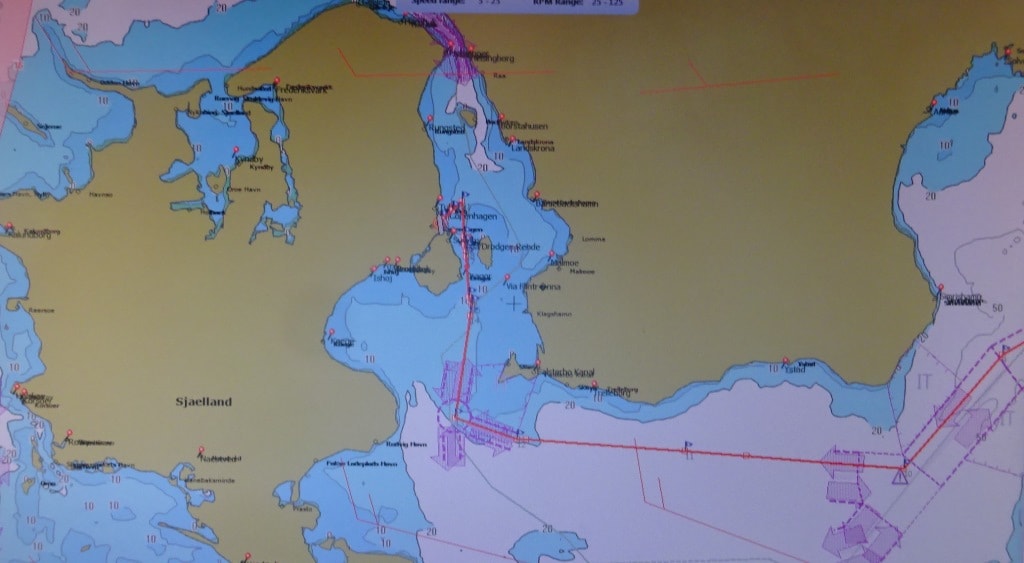
Approaches to Drogden Channel as seen on the ships Navigation System.
This is a shallow channel between Denmark and Sweden and can only transited by ships with a shallow draft. A number of years ago it was dredged to a sustained depth of 8 meters and depending on the water level (the amount of water being pushed in by the North Sea above Denmark) it can now be used by ships with a draft of up to 8 meters and maybe a little bit more. The Vista ships of our company have gone through with Drafts of just over 8 meters. But that is tight.
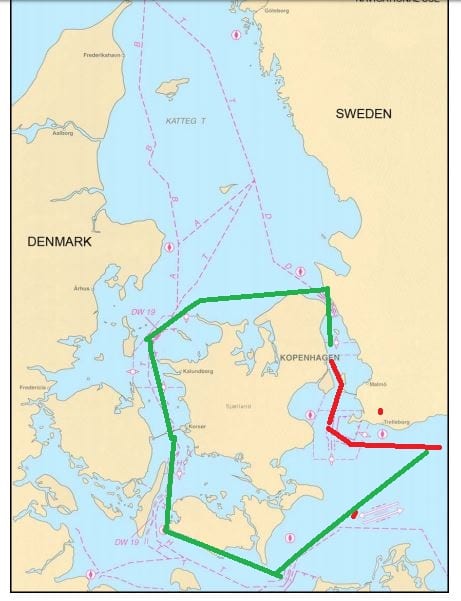
Green is the alternative route if your draft is too much. Not nice. (Diagram courtesy Pilot 194b NOAA)
The alternative, which I had to use when I was here with the old Noordam in 2001, was to go north of Copenhagen and then turn south and sail through the Great Belt to eventually end up at Drogden light house again on the Journey East or West. That added another 14 hrs. to the journey, burnt up a lot of fuel and kept me out of bed for most of the night as the Great Belt is not easy to sail either. Now if you can get your ships draft down to 8 meters or less, you can do it an hour by going through Drogden.
But even with a draft of 8 meters or less, you do not have that much depth under the keel, sometimes no more than 3 feet or 90 centimeters and then you have to go slow to give the water that is being pushed aside by the ship time to flow away. If you go too fast, the ship starts to vibrate. So every captain will adjust his ships speed to the maximum possible before it starts to vibrate. That is normally somewhere between 10 and 12 knots. Because the channel is fairly narrow and shallow, the North Sea tide pushes a lot of water through here and thus is there a substantial current. There have been quite a few ships that miscalculated that current and as a result collided with the lighthouse which is standing at the South entrance guarding a shallow patch or into other opposing ships when the current set them over.
Once out of Drogden it is another 90 minutes to the dock and as mentioned yesterday we were docking at the Lange Linje at the first south berth 199 which is the closest to the city. We were not alone as in port was also the Silver Spirit, a very small boutique cruiser the ms Clio, and an Apartment of the Seas which docked at the new cruise terminal to the west. The dock we are at has little shops opposite the gangway in the old warehouses and taxi’s coaches and sightseeing buses can easily stop outside. Although due to security reasons there is a lot less parking than there was before. But our berth offered the easy option to walk into town, if you were not on tour. Nice people here in Copenhagen, they let the crew use the hop on hop off bus for free and as there were plenty of them, the crew did not need to feel uncomfortable by using them and occupying seats that should have gone to a guest.
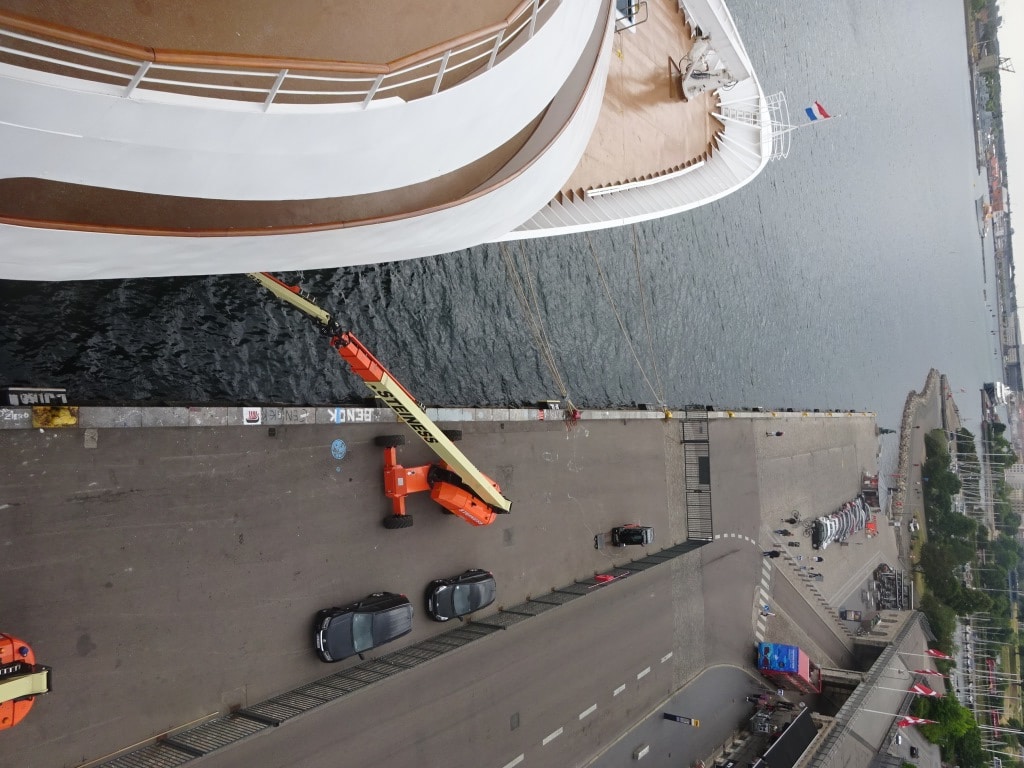
It is nice to have the best dock. The little mermaid is just to the north of here. Also the bo’sun was a happy camper as Copenhagen has cherry pickers so the white paint under the bridge wings could be touched up and also the blue in the curve of the hull.
My favorite pastime is just to walk into town when it is a sunny day, as it was today, look at the changing of the watch at the Royal Palace and then go in the afternoon to Tivoli Gardens which is a permanent fun fair that dates back to the early 19th. Century. (1843 I recall correctly). This is the place where they serve the best Soft Ice in the world and that is a nice compensation for the fact that the local Beer is way too expensive. To avoid that, the only option is to go for the Carlsberg brewery experience, where you get free drinks at the end of the tour. Not as good as Heineken of course but if there is nothing else then Carlsberg is quite drinkable. However all of this was not to be, I had to put my Lord and Master on the plane home today and then spend an afternoon in the engine room looking at bulkheads and lockers. More about the engine room tomorrow.
Apart from an educational trip to the Carlsberg brewery, lots of guests take an excursion to Helsingor and Kronborg Castle which for unknown reasons was used by Shakespeare as the setting for his play Hamlet. Right across the water is the Swedish town of Helsingborg and as for foreigners the two towns almost sound the same; there is a lot of confusion of what is where and why. Copenhagen is fairly compact and if you want to go out on your own most interesting locations are in walking distance.
Copenhagen is the last port of call for this cruise. Tonight we will sail into the North Sea and then follow the Danish, German and Dutch coast down to Ijmuiden, to finish the cruise in Amsterdam on the 16th.
Weather for tomorrow: Unstable. We are expecting quite a bit of wind. As storm Hector is battering Scotland and the Irish Sea.
